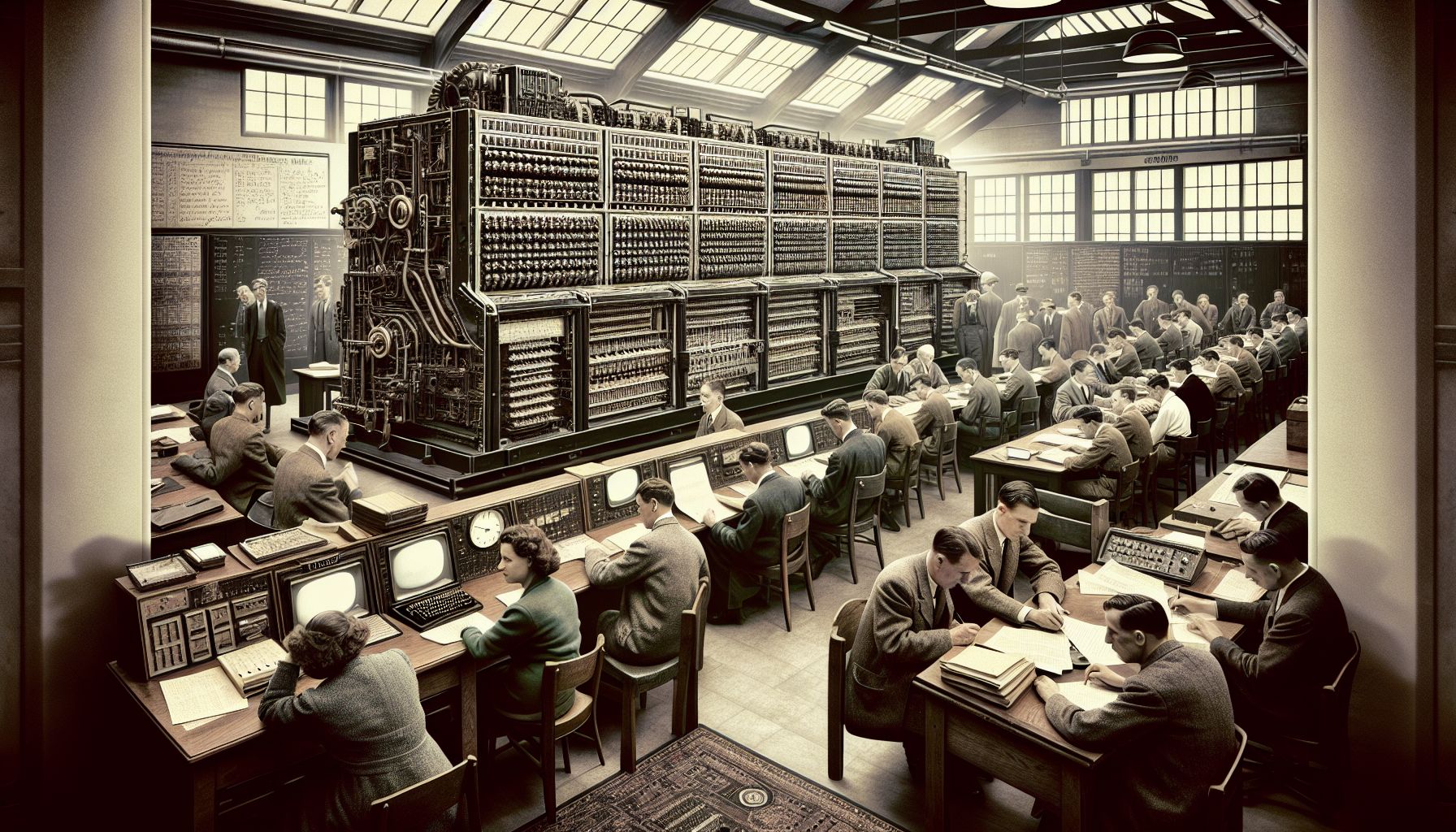📌 Let’s explore the topic in depth and see what insights we can uncover.
⚡ “Before the silicon revolution, a hulking behemoth named ‘Colossus’ helped turn the tide of World War II. Dive into the captivating history of one of the world’s first programmable computers, hidden in the secrecy-shrouded rooms of Bletchley Park.”
Ever wondered how the course of World War II was significantly influenced by a machine? Or how a group of codebreakers working in a secluded mansion in Buckinghamshire contributed significantly to the Allied victory? Today, we are going to connect the dots between the enigma of cryptography, the genius of British codebreakers, and the incredible story of the world’s first programmable, digital, electronic computer: the Colossus. In this post, you’ll gain insights into the intriguing world of WWII codebreaking at Bletchley Park and the role of the Colossus computer in this clandestine process. As we journey through this historical labyrinth, you’ll discover how the Colossus was more than just a machine; it was a monumental step in the evolution of modern computing. So, fasten your seatbelts and prepare for a trip back in time!
🏰 Bletchley Park: The Top-Secret Hub of WWII Codebreaking

"Deciphering WWII Secrets: Colossus Computer at Bletchley Park"
Bletchley Park, located in Buckinghamshire, England, served as the central site for British codebreakers during World War II. Here, an eclectic mix of linguists, mathematicians, chess champions, and crossword enthusiasts worked tirelessly to crack the coded messages of the Axis powers, primarily those encrypted by the infamous Enigma and Lorenz cipher machines. For much of the war, the activities at Bletchley Park remained a well-guarded secret. The mansion and its grounds were a hive of activity where each day was a race against time to intercept and decipher enemy codes. The intelligence gained from these deciphered codes, referred to as ‘Ultra’, played a crucial role in defeating the Axis powers and shortening the war.
🤖 The Colossus: The Dawn of the Computing Age
The Lorenz cipher, used by the German High Command, was much more complex than Enigma and required a more sophisticated approach for decryption. Enter the Colossus, the world’s first programmable, digital, electronic computer. Designed and built by British engineer Tommy Flowers and his team at the Post Office Research Station, the first Colossus was operational by December 1943. It was a machine of unprecedented complexity and power. With its 1,500 vacuum tubes, it could process 5,000 characters per second, a speed unheard of at the time. Colossus was not a general-purpose computer; it was designed for a single task – to crack the Lorenz cipher. It achieved this by applying statistical analysis to the intercepted messages. The machine would run through various possible settings of the Lorenz machine until it found a match. The success of the first Colossus led to the creation of an improved version, Colossus II, which was even faster and more powerful. By the end of the war, a total of ten Colossus machines were in operation at Bletchley Park.
🔐 Decoding Success: The Impact of Colossus and Bletchley Park on WWII
The Colossus and the codebreakers at Bletchley Park were instrumental in several key moments of World War II. The decrypted Lorenz messages provided valuable insights into the strategies and plans of the German High Command, allowing the Allies to anticipate and counteract them. One of the most notable contributions was during the D-Day invasion. The intelligence from Bletchley Park helped to convince Hitler that the main attack would come at Calais rather than Normandy, a deception that played a significant role in the success of the invasion. Furthermore, historians estimate that the work at Bletchley Park, including the efforts of the Colossus, shortened the war by two to four years, saving countless lives.
💻 Legacy of the Colossus: The Birth of Modern Computing
The Colossus was a technological marvel of its time, a machine that pointed towards the future of computing. Even though it was not a general-purpose computer, its design and capabilities laid the groundwork for future computers. After the war, all but two of the Colossus machines were dismantled on the orders of Winston Churchill to maintain their secrecy. The remaining machines were used by the newly formed Government Communications Headquarters (GCHQ) until the 1960s. The story of the Colossus remained a classified secret for many years after the war. It was only in the 1970s that the importance of Bletchley Park and the Colossus was fully revealed to the public. Today, a rebuilt Colossus stands at The National Museum of Computing at Bletchley Park, a testament to the remarkable achievements of its creators and a beacon of the dawn of the computing age.
🧭 Conclusion
The story of the Colossus and the codebreakers at Bletchley Park is one of ingenuity, perseverance, and a relentless pursuit of a seemingly impossible goal. It’s a story that altered the course of World War II and changed the landscape of computing forever. As we navigate through our digital world, it’s worth remembering the Colossus and the brilliant minds at Bletchley Park who laid the foundation for the technological marvels we now take for granted. Their story is a testament to human ingenuity and a reminder that even in the darkest of times, innovation can light the way.
🚀 Curious about the future? Stick around for more discoveries ahead!
